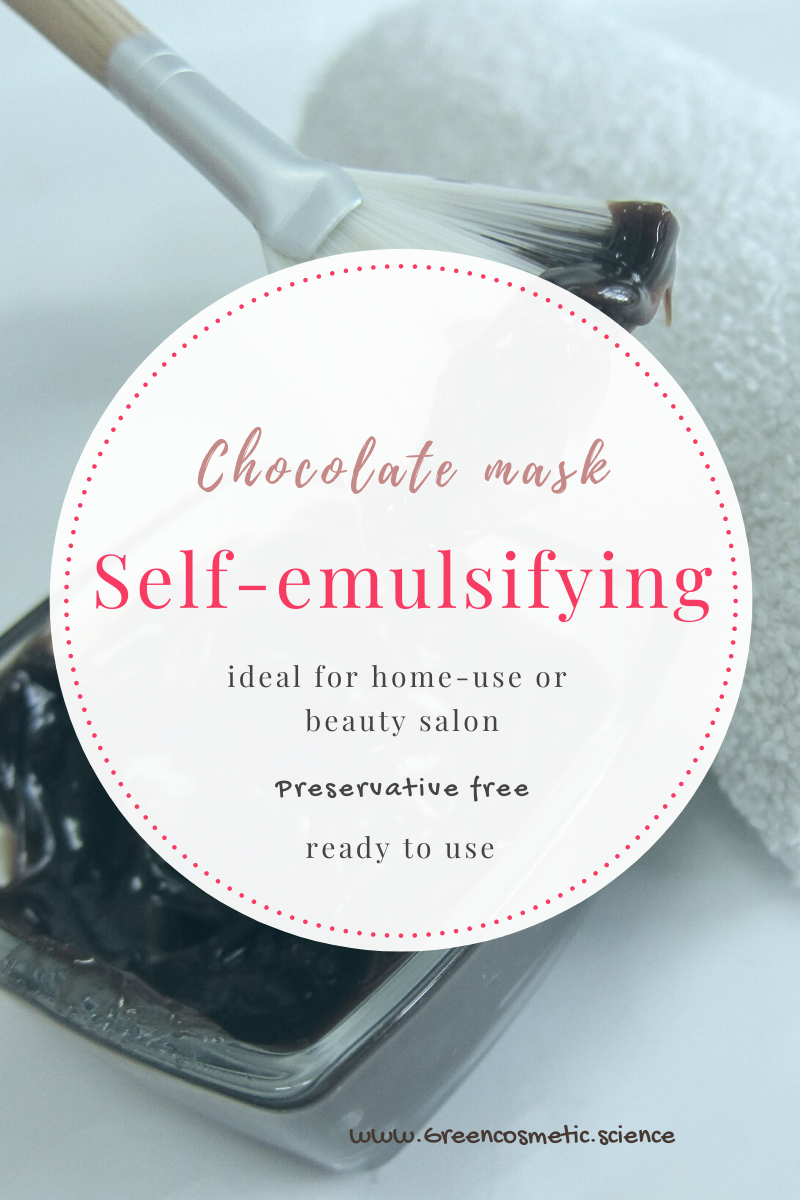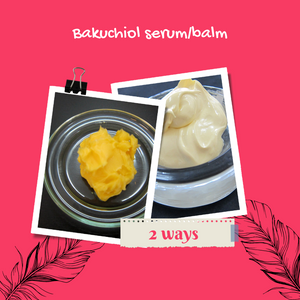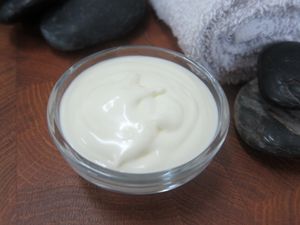
Cocoa and chocolate are among the hottest and sexiest ingredients not only in food and nutrition but in cosmetics as well.
High in antioxidants they contribute to free-radical scavenging, anti-aging, anti-stress properties over skin which all lead to anti-aging and rejuvenation.
In this recent article from the journal of physics the authors have tested the antioxidant properties of a cocoa facial mask in laboratory and although they do not disclose much about the formulation details, they have obviously used a cocoa liquor and blended it with emollients and emulsifiers and a preservative to keep everything safe.
Using cocoa in a water based formulation will be extremely tricky (in terms of preservation). You can blend an outstanding powder mask together and ask the consumer to blend the powder right before use with a liquid (tea, plain water, a hydrosol, a toner or a specially designed liquid for the mask), but hey, we all know that this is a tedious task and lazy consumers (including myself) do not spend time (even though we have plenty of time specially these days with home office). I have at least 4 different powder mask blends at home and I can not remember when I used any of them the last time.
To find something in between and add a convenience touch to the beauty snack without compromising the microbial stability and the safety of the product we used, guess what? Our multifunctional Sapogel Q to create a lush and yummy self-emulsifying and preservative-free facial mask. Actually you can use it all over the body and not confine this miraculous mask only to the face. This mask is easy to use and easy to rinse and can be used at home as well as in institutional beauty and in cosmetic studios and SPA botiques (imagine a lush chocolate body treatment). The concept in not quite new and unique and you have perhaps heard of or had the experience of one of these mask-treatments. Most of them however use chocolate bars and the chocolate of the mask base must be melted. This is quite a time consuming and annoying step (even with the magic of the microwave) and usually the mask is either too hot or too cold to be applied (who can relate to this annoying issue, if not in the cosmetic lab at least in the kitchen and in the baking and icing process). In this Sapogel based mask that we have prepared, the mask is ready to use. No heating-cooling and no blending is needed. Just open the jar or squeeze the tube and voila, you have the mask. Apart from the ease of application, the consistency is so that it really remains over your skin. We all know that it's better to lay down and relax when you apply a mask over the skin but who has time to lay down and wait for the mask to work its magic? With this mask (if you are making and selling it for home use) you can easily apply the mask over the skin and go vaccuum or sit at your desk and work (hopefully nobody video chats you) without the risk of the mask dripping overall and staining your clothes, furniture or the carpet.
Having said that all (that was like a novel), please tell me if you don't have time to read my long chatter and you prefer shorter blog posts, I try to keep it short in the future, let's jump to the formulation and procedure.
We made two versions of this mask. For the sake of time saving, we made a simpler version for the video and we made a more elaborate version off-camera. We are sharing both of them here. They both look exactly the same and the procedure is exactly the same. The key here is al always, to slowly and gradually add the oil phase to the sapogel phase.
Now let's jump to the ingredients and procedure.
Ingredients: Version 1- The simple version (as on the video)
| Phase A | Dosage |
|---|---|
| Sapogel Q | 25,0% |
| Phase B | |
| Poppy seed oil | 38,6% |
| Watermelon seed oil | 5,0% |
| Triheptanoin | 10,0% |
| Raspberry oil | 5,0% |
| Olive squalane | 5,0% |
| DEFENSIL®-PLUS | 3,0% |
| Amaranth CO2 extract | 1,0% |
| Prickley pear CO2 extract | 1,0% |
| Liq vit C | 1,0% |
| Tocopherol | 0,3% |
| Cocoa extract | 0,5% |
| Provit D | 0,1% |
| Ginger oil | 0,2% |
| Patchouli oil | 0,3% |
| Cocoa powder | 4,0% |

Ingredients: Version 2- The elaborate version
| Phase A | Dosage |
|---|---|
| Sapogel Q | 20,0% |
| Phase B | |
| Sacha-Inchi oil | 9,0% |
| Watermelon seed oil | 8,0% |
| Triheptanoin | 10,0% |
| Plum seed oil | 10,0% |
| Raspberry oil | 5,0% |
| Olive squalane | 8,1% |
| Cherry seed oil | 10,0% |
| Rosehip oil | 2,5% |
| Defensil+ | 3,0% |
| Amaranth CO2 extract | 1,0% |
| Goji berry CO2 extract | 2,0% |
| Pomegranate CO2 extract | 1,0% |
| Black cumin CO2 extract | 1,0% |
| Prickley pear CO2 extract | 3,0% |
| Liq vit C | 1,0% |
| Tocopherol | 0,3% |
| Cocoa extract | 0,5% |
| Provit D | 0,1% |
| Ginger oil | 0,2% |
| Patchouli oil | 0,3% |
| Cocoa powder | 4,0% |
Procedure:
1- Blend all ingredients in phase B together. Depending on your lab temperature and the season, you may need to gently heat the cocoa CO2 extract to accelerate its incorporation.
2- Gradually and slowly add phase B to the sapogel phase. You need to keep stirring the oil phase to keep the cocoa powder suspended.
3- Take your stability samples and fill the rest in a suitable container.
Watch the video of the simple version here
Stay safe and creative


